SARah (Satellite-based Radar Reconnaissance System)
EO
Quick facts
Overview
| Mission type | EO |
| Launch date | 18 Jun 2022 |
SARah (Satellite-based Radar Reconnaissance System), a next-generation constellation of the German Bundeswehr
Spacecraft Launch Development Status References
In July 2013, OHB System AG of Bremen, Germany signed a contract with Germany’s defense procurement agency (BAAINBw) to develop the SARah (Satellite-based Radar Reconnaissance System). The plans call for an operation of the system in late 2019. The second generation satellite constellation of three spacecraft, two provided by OHB System AG and one by Airbus DS (former Astrium GmbH), will replace the current SAR-Lupe constellation of five spacecraft, and will be delivered to orbit by two Falcon 9 rockets of SpaceX. 1) 2)
Thanks to the SAR-Lupe system, the Federal Republic of Germany has had capabilities of an international standard in global satellite-based radar reconnaissance since 2007. Developed and built by OHB System AG, the system comprises five satellites and a ground station. It was delivered to the customer at the end of 2008 and has been operating reliably and successfully with the involvement of OHB System AG since then. The contract governing the operation of SAR-Lupe expires in November 2017. In order to maintain its reconnaissance capabilities in the future, the Federal Republic of Germany is now planning the SARah follow-up system, which will be even more effective.
SARah will have a different architecture to SAR-Lupe with only three satellites in the space segment and two instead of one ground stations. Two of the three satellites will be based on the reflector technology which was developed for and has proven itself with SAR-Lupe and will be enhanced for SARah. It will be supplemented with a third satellite, which is a further development of the phased array technology developed by Astrium GmbH, which has also already proven itself in space and is currently being used on the civil satellite twins TerraSAR-X and Tandem-X. By linking these two radar technologies it will be possible to substantially enhance the efficiency of the overall system.
Under the contract signed, OHB System AG will be responsible for implementing the entire system as prime contractor. In addition, OHB will be supplying the two reflector satellites and the main elements of the ground segment comprising the two ground stations. Under a subcontract, Astrium GmbH will be supplying the phased-array satellite and the related special functions for the ground segment.
Spacecraft
The Airbus-built "SARah-1" Earth observation satellite, under subcontract to OHB System AG, has been transported from Friedrichshafen, Germany, to Vandenberg, California, USA, and is currently being prepared for launch in June 2022 and subsequent operation by Airbus in space. 3)
SARah is a new operational reconnaissance system consisting of several satellites and a ground segment, which was developed on behalf of the German Bundeswehr. As the successor system, it replaces the SAR-Lupe system currently in service and offers significantly enhanced capabilities and system performance.
Overall responsibility for the complete SARah system lies with OHB System AG, Bremen, as prime contractor, which holds the main contract from the Federal Office of Bundeswehr Equipment, Information Technology and In-Service Support (BAAINBw). Airbus is the main subcontractor. The architecture of the overall SARah system consists of a space segment with three radar satellites (2 x OHB, 1 x Airbus) and a ground segment connected to two ground stations.
Airbus Defence and Space in Friedrichshafen developed the satellite with the latest, highest-resolution radar technology as well as jointly developing the ground segment to operate its own satellite. The company is also responsible for the launch, calibration and validation of the radar satellite, with final in-orbit delivery.
The radar instrument developed and built by Airbus features a sophisticated active phased array antenna and represents a further development of the Airbus-built TerraSAR, TanDEM-X and PAZ Earth observation satellites already successfully operating in orbit. This technology offers the advantages of very fast pointing and very flexible shaping of the antenna beam to deliver imagery in record time.
In general, radar satellites, with both passive and active antenna technology, allow observation of the Earth's surface regardless of the time of day or weather conditions.
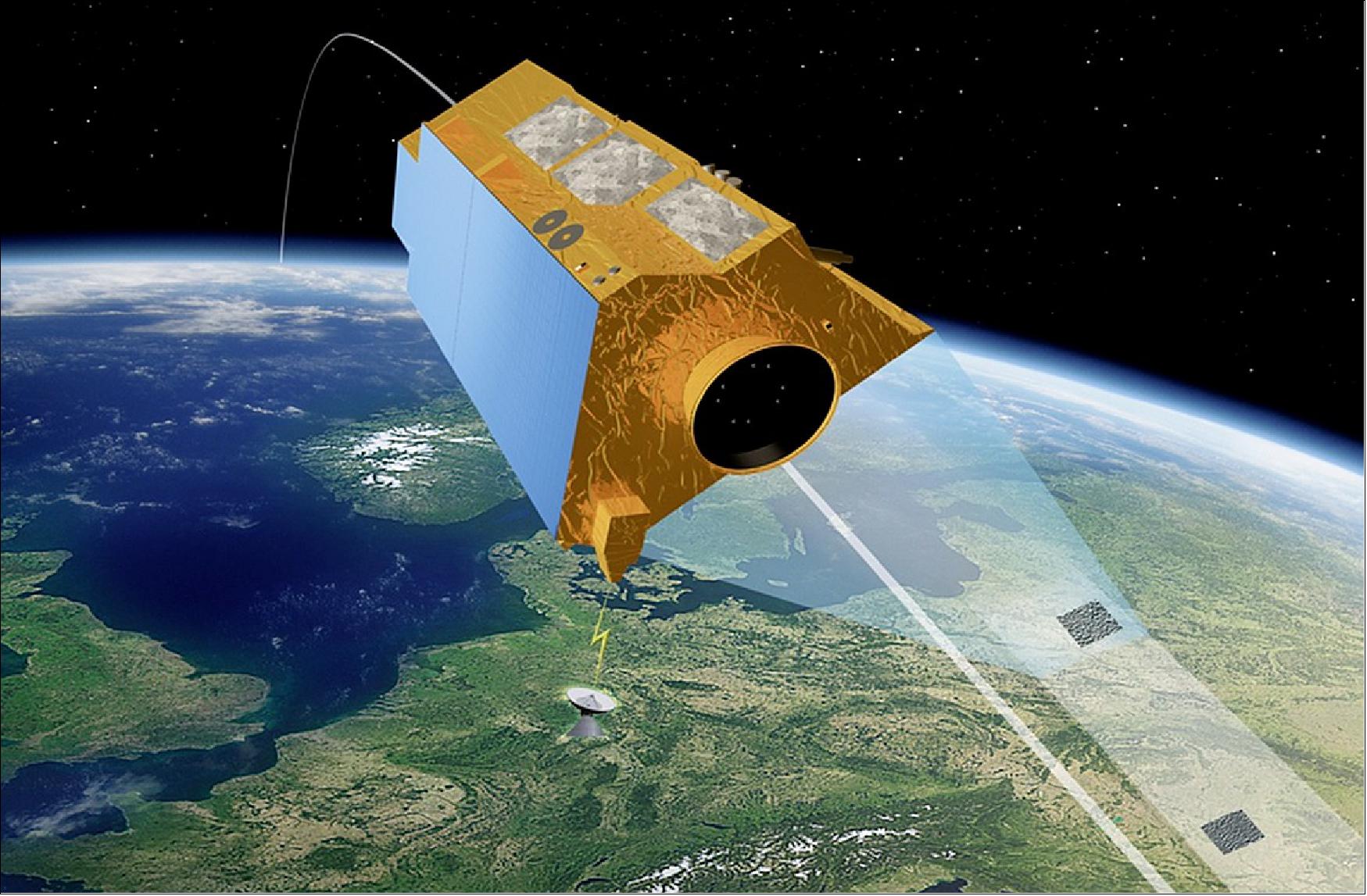
Launch
The SARah-1 satellite with a mass of 4000 kg of the German Bundeswehr launched on 18 June 2022 at 7:19 a.m. PT (14:19 UTC) from the SLC-4 (Space Launch Complex-4) of the VSFB (Vandenberg Space Force Base), California. A SpaceX Falcon 9 Block 5 rocket launched the SARah-1 radar remote sensing satellite. 4)
The first stage’s nine engines fired nearly two-and-a-half minutes, then the booster separated from the upper stage to begin maneuvers for return to Vandenberg, a military spaceport located on California’s Central Coast between Los Angeles and San Francisco.
The first stage booster flipped around with the help of cold gas thrusters to fly in a tail first orientation, then ignited three of its engines for a “boost-back” burn to reverse course and head back to Vandenberg. The booster reached a maximum altitude, or apogee, of about 130 km before falling back through the atmosphere.
The rocket steered through the thicker air with the help of hypersonic grid fins, touching down on the concrete landing pad at Landing Zone 4 at Vandenberg about eighth minutes after liftoff. The landing marked the 125th recovery of a Falcon booster, and the sixth Falcon rocket landing at Vandenberg. It was the third flight for this booster, tail number B1071.
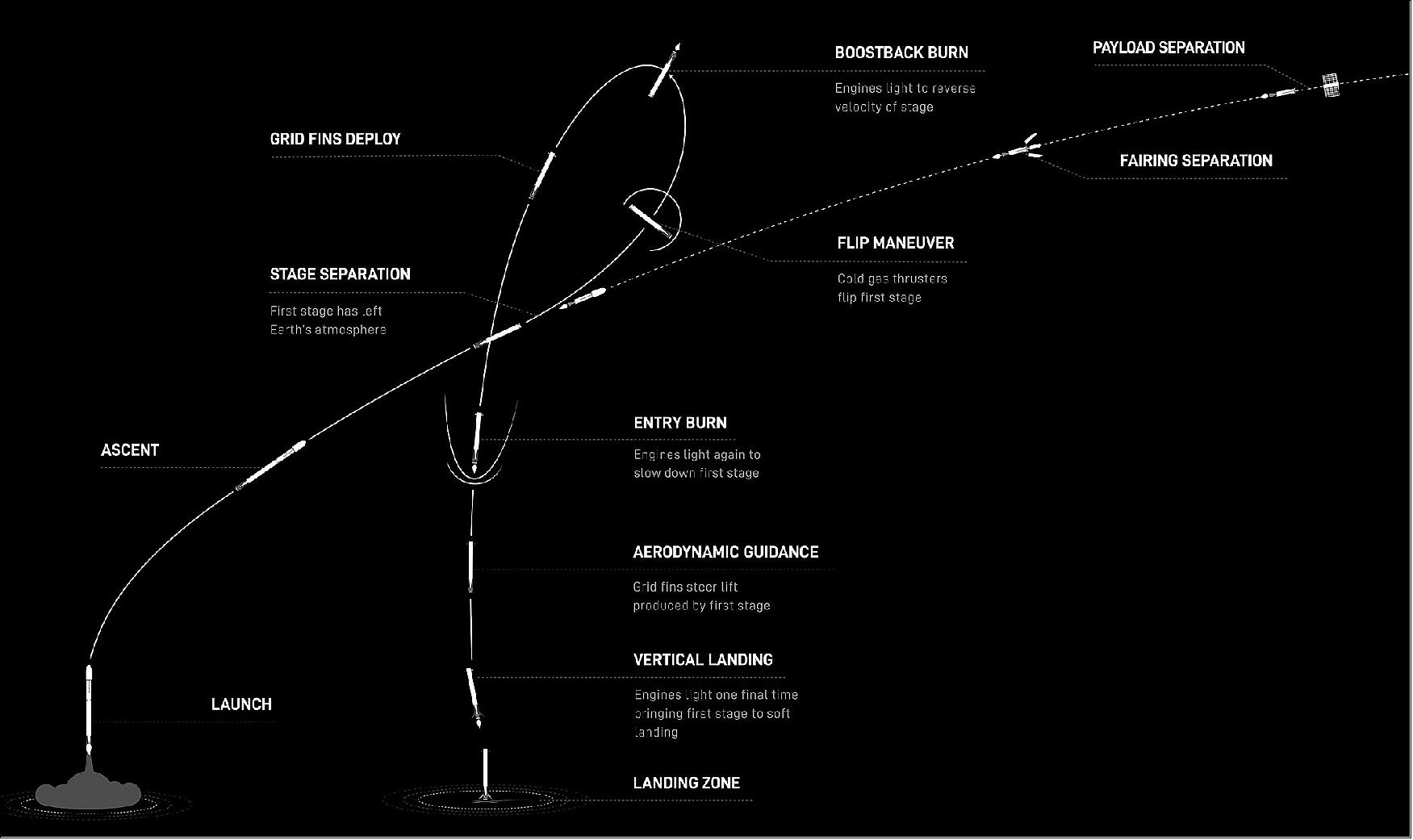
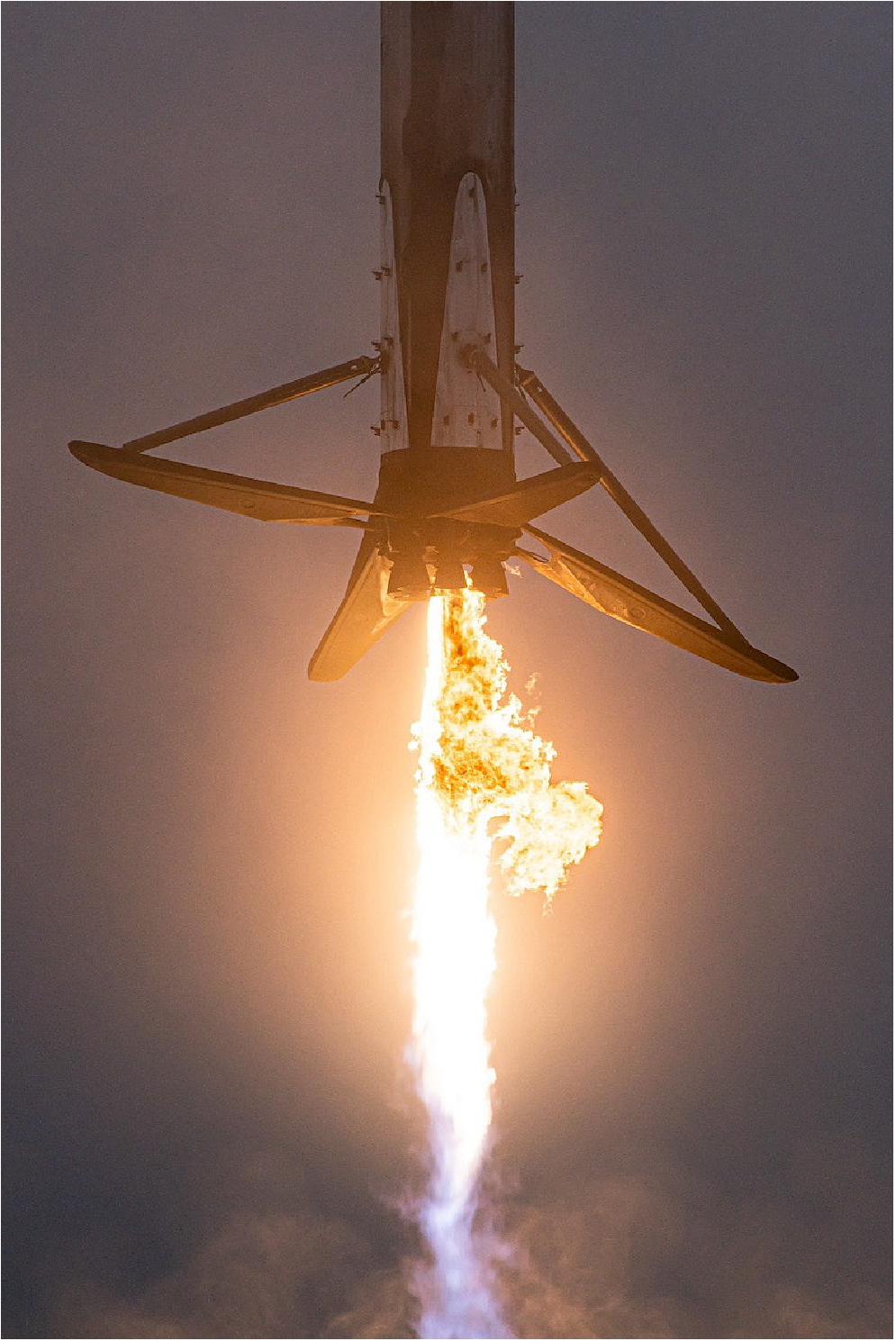
Orbit: Sun-synchronous orbit, the Falcon 9 targeted a polar orbit of 500 km with an inclination of 98.4º, but the exact altitude and inclination reached on Saturday’s mission were not immediately available.
The German military later confirmed payload deployment and successful contact with the four-ton satellite. The launch and commissioning (LEOP) of the satellite will be supervised from Airbus' control centre in Friedrichshafen. The subsequent calibration, validation and operation will be carried out from the Bundeswehr control centre.
SARah-2 and -3
The SARah-2 and -3 satellites form the second component of the SARah system. These satellites will be based on the reflector-antenna technology of the SAR-Lupe satellites. They will fly in formation with SARah-1.
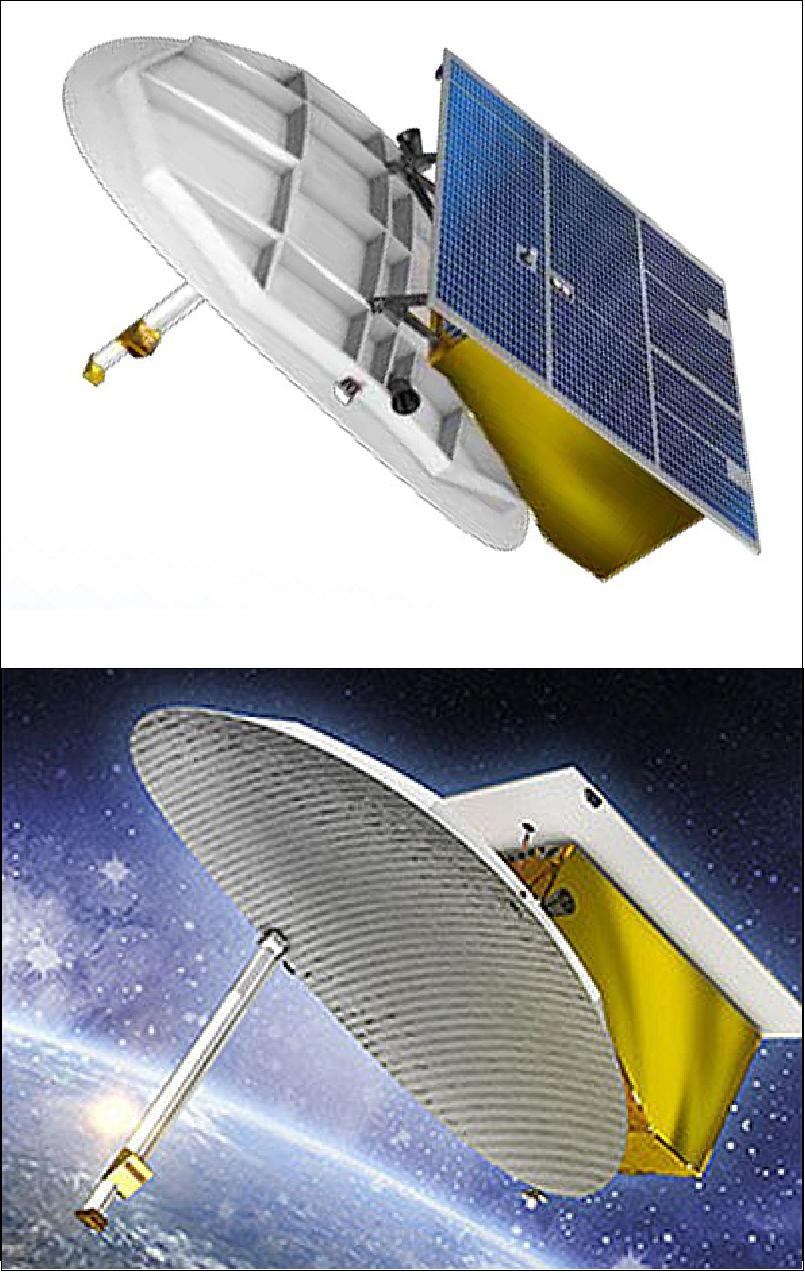
SmartLEO spacecraft: 5)
The OHB SmartLEO platform family is a space-proven solution that relies on more than 45 flawless years in orbit and represents the perfect choice for accurate Earth observation with high resolution. SmartLEO can carry ample types of payloads, such as the Synthetic Aperture Radar (SAR), multi-, super- and hyperspectral optical instruments, spectrometers, radiometers, or altimeters. SmartLEO’s compact, scalable and modular design ensures a highly accurate three-axis stabilized attitude and orbit control and a high-rate payload data processing chain with state-of-the-art on-board storage and downlink capacity.
SmartLEO was designed for small series production and represents an attractive solution for satellite constellations requiring high reliability and high performance. The further development of SmartLEO is realized together with our partners and customers ESA and DLR. The SmartLEO platform family will support also missions with demands for bigger and more powerful payloads and – as SmartLEO Agile – fast slewing or multi-targeting applications.
SmartLEO: Flight-Proven Platform Design: SmartLEO inherits the flight-proven SAR-Lupe platform, with a design for small series production. SAR-Lupe is Germany’s first satellite-based radar reconnaissance system. It is essential for the Federal Government to identify and monitor regions of latent crisis at an early stage and to assure independence in reconnaissance. OHB System as prime contractor developed five identical satellites equipped with highest-resolution radar systems for providing worldwide information under all weather conditions at day and night time. The system is operational since December 2007, and OHB operates the highly automated SAR-Lupe Satellite Ground Segment.
Payload | Type Maximum mass | Ample Configuration for High Agility (X-SAR, etc) |
Energy supply | Average power payload Solar generator | 1 kW |
Data processing | On-Board Processor | LEON II FT |
Communication | TM/TC | S-band 128/256 kbit/s |
ACS (Attitude Control System) | Attitude control | 3-axis control |
Orbit control system | Propulsion | Mono-propellant |
S/C structure | Structure design | Aluminum sandwich panel with internal shear frame |
TCS (Thermal Control System) | Main elements | MLI, heaters, sensors, heat-pipes |
General | S/C launch mass | 1,900 – 2,100 kg |
Development Status
• May 2020: The Bundeswehr’s mission is to provide national and collective defense as laid down in the German constitution. To be able to accomplish this mission and the tasks based on it, the necessary capabilities must be made available to the armed forces. This includes providing them with the required equipment. 6)
• August 7, 2019: OHB System AG, a subsidiary of the listed company OHB SE, is also developing and implementing SARah, the second satellite-based radar reconnaissance system for the German armed forces. SARah features enhanced system performance and will consist of three modern satellites with complementary radar technology as well as two ground stations. The customer, the German Federal Ministry of Defense (BMVg), represented by BAAINBw (Bundesamt für Ausrüstung, Informationstechnik und Nutzung der Bundeswehr), recently signed an additional contract with OHB System AG to implement the SARah system in response to current threats in the area of IT security and satellite communications. These modifications will lead to increased cyber security for the entire system. In the case of this modification agreement, the already optionally agreed operating phase was adapted to these new requirements. 7)
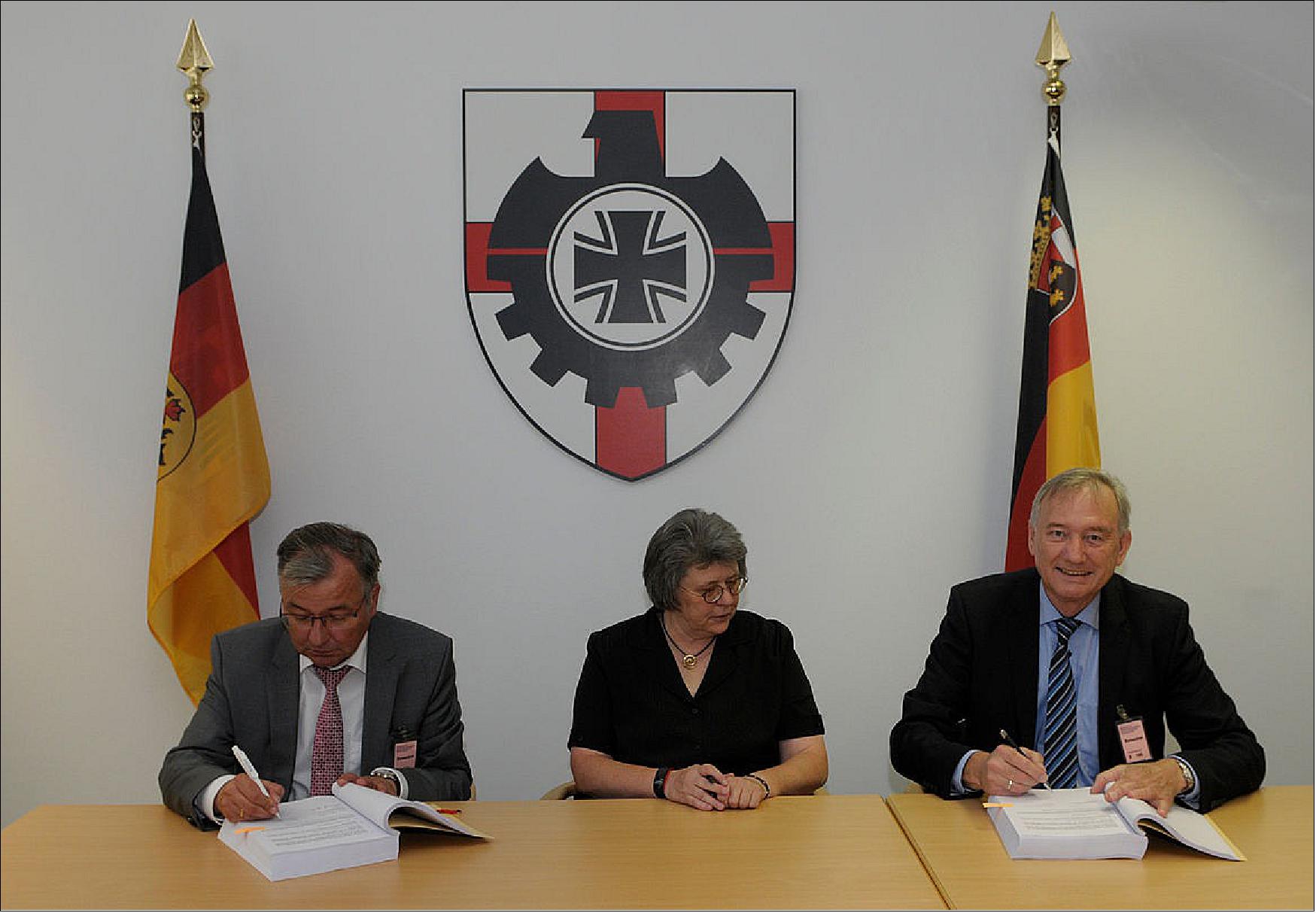
- Reliable, safe and highly accurate - these are the requirements for SARah. After all, the system's high-resolution radar images are intended to provide decision-makers with strategically relevant information from an overarching perspective. At any hour, in any weather and from any location on Earth. "At SARah, we have set ourselves high goals together with our customer. Today's contract is a proof of the importance of satellite-based radar reconnaissance and the protection of the system against unauthorised access when it comes to the availability of independent data for all applications - wherever and whenever," says Dr. Ingo Engeln, Member of the Management Board of OHB System AG. "We feel well prepared for the tasks ahead. Finally, OHB, as prime contractor to the German Federal Ministry of Defense, designed and implemented the current satellite-based radar reconnaissance system SAR-Lupe. Since 2007, our five satellites have been performing their functions perfectly and continue to supply high-quality image products".
Space and Ground Segment
- OHB System AG was entrusted with the development and implementation of the SARah reconnaissance system. The company is responsible for the overall system, the insertion of the satellites into their target orbit and the operation of the satellite constellation. The space segment comprises two OHB satellites based on reflector technology as well as a satellite with phased array technology from subcontractor Airbus Defence and Space. The ground segment of the SARah system includes elements for commissioning the system, satellite control, image processing and archiving, two ground stations as well as various interfaces to the customer and other systems. As prime contractor for the future SARah system, OHB is responsible for the key ground segment functions, for all customer interfaces and for one ground station.
• In September 2013, OHB System has awarded a contract to Astrium for production and delivery of a high performance radar satellite to the German Armed Forces. 8)
- OHB System has awarded a contract to Astrium for production and delivery of a high performance radar satellite to the German Armed Forces.
- Valued at €344m, the order forms subcontract to the original €816m contract awarded by the Federal Office of Equipment, Information Technology and In-Service Support of the Bundeswehr (BAAINBw) to OHB for delivery of SARah satellite-based reconnaissance system, in July 2013.
- Comprising of three satellites and two ground stations, the SARah system’s space segment will feature two OHB reflector technology-equipped satellites, and a third phased-array satellite to be built by Astrium.
- Astrium head Evert Dudok said the satellite will mark the first Earth observation satellite being supplied by the company to the German Armed Forces, and will be equipped with the latest ultra-high performance active phased-array technology.
- ”Not only will this significantly enhance the German Forces’ capabilities, it also helps better position Germany industrially for the future,” Dudok said.
- Astrium’s phased array technology has already proven its capabilities in space and is currently operational on Germany’s civilian earth-observation satellites, TerraSAR-X and TanDEM-X.
- "It helps better position Germany industrially for the future." Featuring numerous interconnected and variably controlled individual transmitter / receiver modules, the phased array antennas provide the operator with rapid image sequencing, variable image sizes and blur-free recordings by allowing adjustments to the direction and range of view without mechanical movement of antennas.
- The combination of OHB and Astrium’s reflector and phased array radar technologies is expected to substantially improve efficiency of the overall SARah system.
- The contract also includes supply of all necessary components for the ground segment to help ensure full operation of image production process, from requesting images through to final delivery when the SARah system becomes operational at the end of 2019.
- SARah system is scheduled to succeed the German military’s existing five-satellite SAR-Lupe system, SpaceNews reports.
References
1) ”OHB System AG awarded contract for the development and integration of the SARah radar satellite reconnaissance system for the German federal armed forces,” OHB Pre Release, 2 July 2013, URL: https://web.archive.org/web/20230324192130/https://www.ohb-system.de/press-releases-details/ohb-system-ag-awarded-contract-for-the-development-and-integration-of-the-sarah-radar-satellite-reconnaissance-system-for-the-ge.html
2) Peter B. de Selding, ”OHB Signs Contract for Germany’s Next-gen Radar Satellites,” SpaceNews, 2 July 2013, URL: https://spacenews.com/36091ohb-signs-contract-for-germanys-next-gen-radar-satellites/
3) ”Airbus-built Earth observation satellite (SARah-1) ready for launch,” Airbus, 13 June 2022, URL: https://www.airbus.com/en/newsroom/press-releases/2022-06-airbus-built-earth-observation-satellite-sarah-1-ready-for-launch
4) Stephen Clark, ”SpaceX launches German military radar satellite from California,” Spaceflight Now, 18 June 2022, URL: https://spaceflightnow.com/2022/06/18/spacex-launches-german-military-radar-satellite-from-california/
5) ”Medium and large platforms by OHB,” OHB, 2018, URL: https://www.ohb-system.de/files/images/mediathek/downloads/OHB-System_Satellite_Platforms_2018.pdf
6) ”The Bundeswehr as a Customer,” Federal Office of Bundeswehr Equipment, Information Technology and In-Service Support, May 2020, URL: https://www.bundeswehr.de/resource/blob/954970/4050c8c78fce9206e17ddd5bbff1014d/broschuere-auftraggeber-bundeswehr-en-data.pdf
7) ”Satellite-based radar reconnaissance for Germany — OHB awarded additional contract for SARah project,” OHB Press Release, 7 August 2019, URL: https://www.ohb.de/en/news/2019/satellite-based-radar-reconnaissance-for-germany
8) ”Astrium to develop German military’s third SARah reconnaissance satellite,” Army Technology News, 19 September 2013, URL: https://www.army-technology.com/news/newsastrium-german-third-sarah-reconnaissance-satellite/